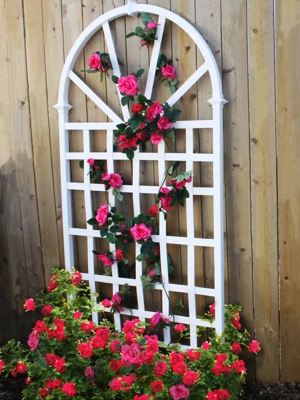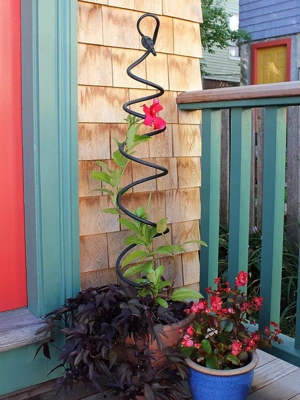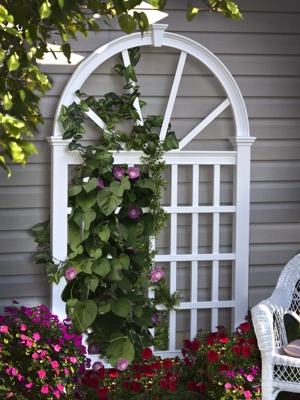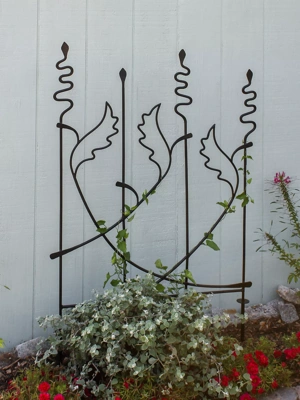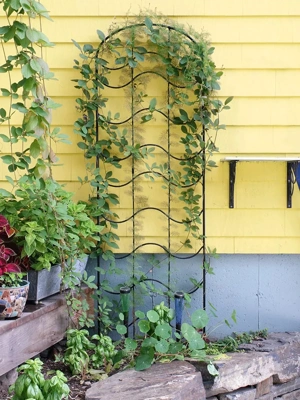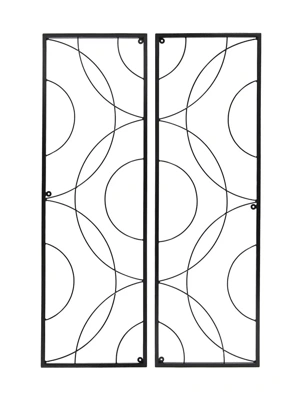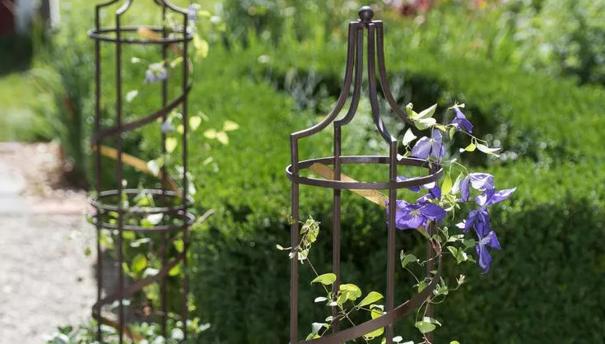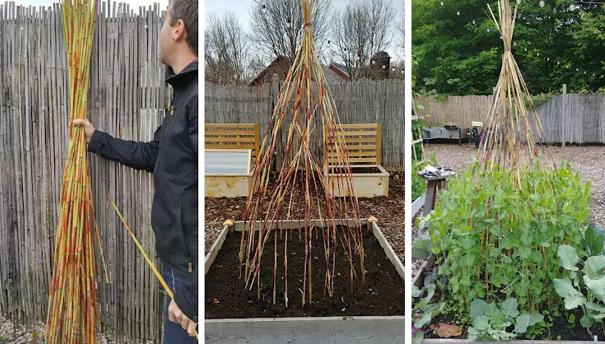Edible Landscaping
Your front yard doesn't need to JUST look good — it can taste good too
 The low fence, and parallel gravel path — with its edging of dusty miller and purple violas — outline this bed and give it form. Purple cabbages add both a sculptural shape and rich color. The daffodils (not edible), add warmth to an otherwise somber scene. To complete the design, the antique birdbath adds a focal point that stops the eye
The low fence, and parallel gravel path — with its edging of dusty miller and purple violas — outline this bed and give it form. Purple cabbages add both a sculptural shape and rich color. The daffodils (not edible), add warmth to an otherwise somber scene. To complete the design, the antique birdbath adds a focal point that stops the eyeText and photos by Rosalind Creasy
Vegetables and fruits have taken center stage in the American landscape — at last. And why not? Homegrown vegetables and fruit are good for you, they get picked at their prime and only have to travel as far as your kitchen. Edible landscapes are a wonderful option for most homeowners, but you have to break from tradition and look at the limitless possibilities for including edibles in any landscape design.
How do you get more edible plants in your landscape? When adding edibles to the garden, the principles of good design are too often forgotten. The vegetables are relegated to forgotten corners of the yard where they have no chance to shine. Or, on the opposite end of the scale, the enthusiastic gardener converts an entire landscape to edibles, resulting in a haphazard design and far too much garden for the average family to maintain and use.
After 30 years as a landscape designer championing vegetables and fruits, my answer is simple: Create a design that — when possible — uses striking, food-producing plants instead of ornamental plants.
For instance, if you want colorful fall foliage and screening, forego the hedge of invasive burning bush (euonymus) and plant a row of handsome blueberry bushes instead. You'll get red or apricot fall foliage as well as a season of juicy, good-for-you berries. In a border of non-edible plants, add dramatic groupings of ruby chard, purple-flowered eggplants, and sculptural gray-green collards. Refurbish an overcrowded bed of irises with a tropical looking rhubarb, surrounded by a border of strawberries.
7 Ways to Add Edible Plants to the Landscape
1. Use contrasting foliage size
The small leaves of the peppers, tomato plant, and lawn set off the dramatic leaves of the zucchini plants. The rustic fence behind the vegetables makes the foliage stand out; the planting of dwarf marigolds add color to the mostly green bed. As a bonus, the marigolds also provide pollen and nectar for beneficial insects.

2. Use strong lines and vertical elements
The stepping stones draw the eye into the space and prevent the path from getting worn or muddy. The clean edge of the small lawn leads the eye further into the garden, where a sculptural red rooster waits. Arbors frame the scene. The bed of beans, squash, strawberries, tomato and collards features contrasting foliage sizes, adding texture and interest.

3. Some structure provides....well, structure
At the entrance of this garden, an arbor and boxwood hedge give structure, along with contrasting red elements. Runner beans clamber up a green arbor and the red planter and verbena flowers accentuate the bean's red flowers. Red and green are opposites on the color wheel, so they add drama to any scene. Brightly painted gates and fences add style. A well-trimmed hedge is guaranteed to add formality to any garden.

4. Add charm with flowers
Add a few petunias to a planting of chard and the bed is transformed. Here the flowers function in many ways: Their pink blooms set off the pink stems of the chard and make the area more appealing. The rambling plants cover the cut, spent stems of the chard after harvest and attract beneficial insects. Notice too that the large foliage of the chard is set off by the small foliage and flowers of the petunias.
5. Think COLOR!
A purple gate, purple and chartreuse Tubtrugs, brightly colored Spiral Supports, and, of course, flowers enliven this mostly green scene. The color of the planters and supports add interest when the plants are young and there isn't much to see. A fence frames the patio and makes it feel more intimate.
Color again adds drama to a bed of primarily green vegetables. A few easily grown flowers, such as these dwarf red zinnias, can brighten a bed of cherry and purple peppers. Zinnias, marigolds, petunias and geraniums in many colors all work well because they bloom all summer and attract beneficial insects.


6. Pots and planters make things pop
Containers make a patio more interesting and productive. An easy and inexpensive way to make a big statement: Take a half-barrel and paint it in a bright color. Plant it brimfull with strawberries. To get more fruit from your container planting, drill several 2" holes in the side so that strawberries, or even herbs, can be planted in the openings. As a bonus, the strawberries are safe from slugs.

7. Lastly, bring in some extras
A simple garden ornament — and a little humor — can light up a raised bed. This stone rabbit adds some whimsy to the planting of lettuces and violas (which are also edible - try them in salads!) Garden ornaments statues also provide a little visual interest during those slow garden weeks when things aren't blooming.

More Edible + Ornamental Combinations To Try
When choosing plants, select vegetables and fruits that you love to eat. Make a list of your favorites and do some research on what they need to thrive. Can you provide the right amount of sun and moisture? Take note of plant characteristics, including size, leaf shape, color, flower and unusual fruit. Study photos of edible landscapes and decide on a look that appeals to you.
Here are more ideas — with non-edible plants marked in italics — to get you started:
Tomatoes + Moon Vine: Train red and orange cherry tomatoes to grow over an arbor. For more fun, combine them with fragrant climbing moon vine, which is fragrant.
Zucchinis + Dahlias: Try gold zucchinis interplanted with yellow dahlias. Pop some purple basil in between to create contrast.
Beans + Zinnias: Go classic red and white! Try a path bordered with dwarf red runner beans, backed with giant red-and-white-striped peppermint zinnias.
Strawberries + Petunias: Let strawberries cascade out of a planter (which keeps them safe from slugs!) and combine them with dwarf burgundy-leaved cannas or cascading red petunias.
Carrots + Nasturtium: A bed of fernlike carrots and curly kale surrounded by dwarf nasturtiums is always a delight.
Peppers + Celosia: Bold containers filled with bell peppers and feathery neon celosia are a hit on steps up to the porch.
Artichokes + Impatiens: In mild-winter areas, consider a row of silvery, dramatic-leaved artichokes, underplanted with purple or red impatiens
Blueberries + Sweet Alyssum: For the ultimate pollinator pathway, plant a hedge of blueberry shrubs and underplant it with low-growing, white-flowering sweet alyssum.
Last updated: 03/07/2024
Print this Article:
Related items
Related Articles
Get the Dirt
Stay up to date on new articles and advice. Please fill out the information below.

 Rosalind Creasy Photo: Noah Hawthorne
Rosalind Creasy Photo: Noah Hawthorne
